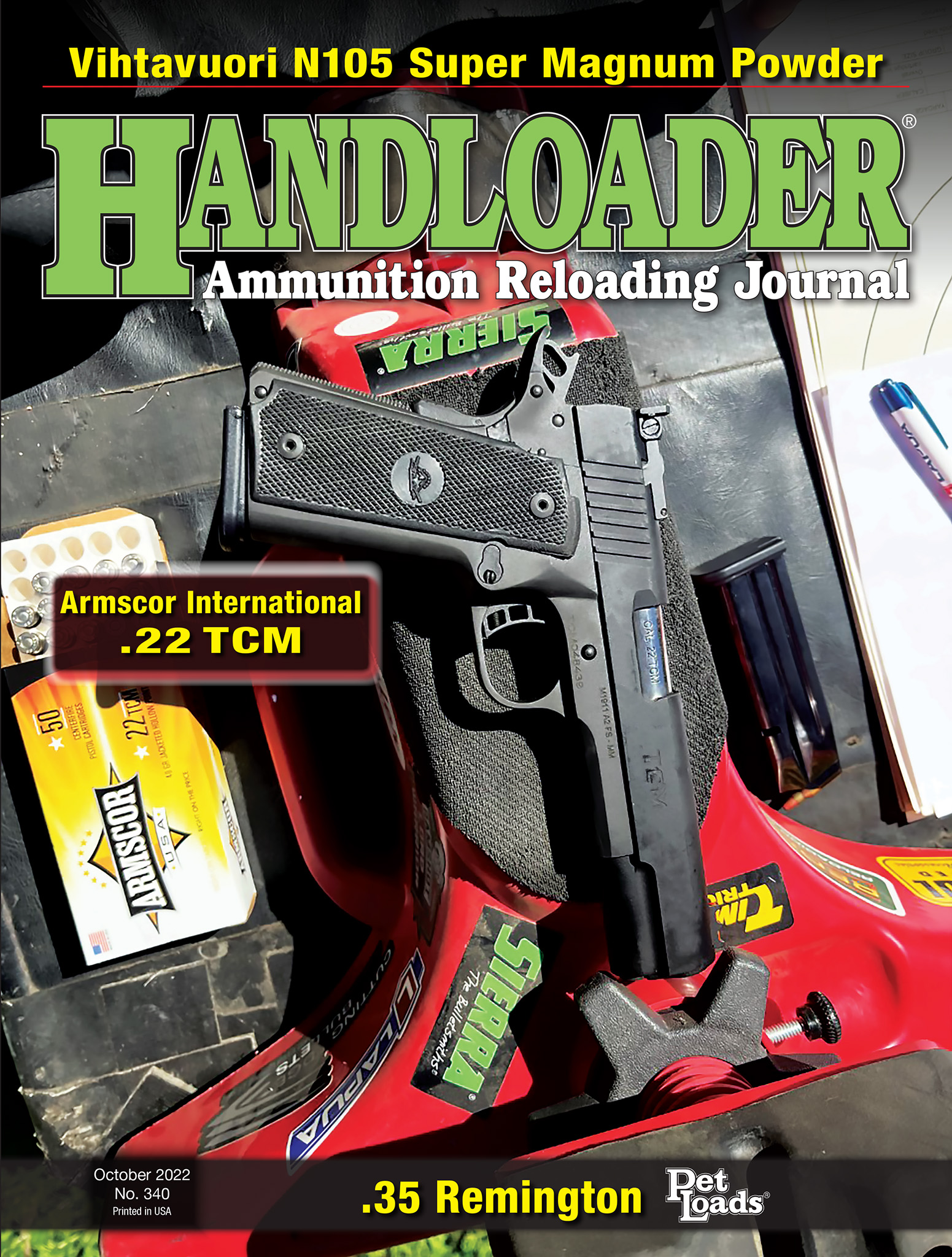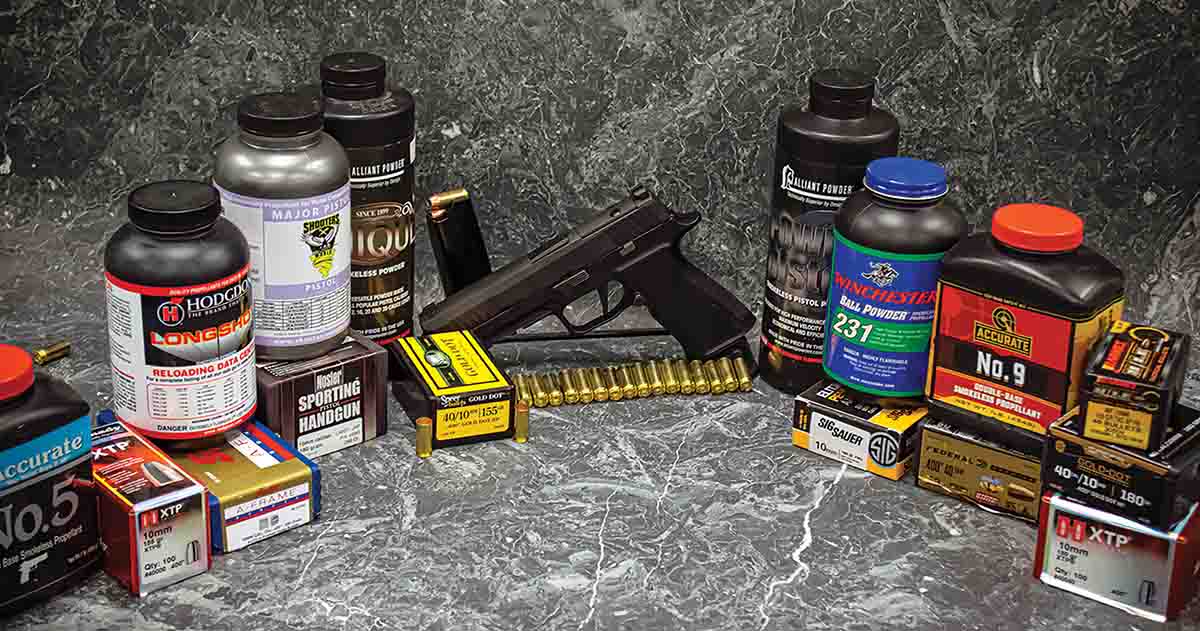
A wide range of bullets and powders were selected for testing after consulting LoadData.com and various other loading manuals.
On May 6 of this year, a buddy and I attended the SIG Freedom Days at the Ben Avery Shooting Facility near Phoenix, Arizona. This one-of-a-kind event was open to the public and allowed consumers to test-fire many of the firearms in SIG’s lineup, for a small fee of course. They also had demonstrations and discussions about the winner of the Next Generation Squad Weapon (NGSW) trials, the MCX Spear (also known as the XM5 chambered in 6.8x51), the SIG LMG-6.8 (or the M250) and the SIG MG 338. Perhaps one of the most interesting aspects of this system is the fact that it uses a two-piece case. The case head is steel while the body and neck are made of brass. Having experience with numerous two-piece case designs, I am very excited to experiment with these cases, as firearms and the cases themselves become more available to the public.
All in all, the event was a joy to attend and I learned a lot while there, from various SIG products to their plans of manufacturing their own primers! They have no timeframe on this and it is not something they are officially announcing, but it is something they are exploring. There were a lot of big names attending and offering demonstrations, including Scotty Neil, Kyle Lamb and Lena Miculek. I even got to talk handloading with Jerry Miculek for a while, which was a real treat. During the event, SIG released the SIG P320-XTEN chambered in 10mm Auto. After waiting in line, again and again, to hammer steel downrange, I decided to get one sent over for testing. The firearm showed up about a week after the event much to my glee. Ammunition has been flowing steadily through the gun since then.
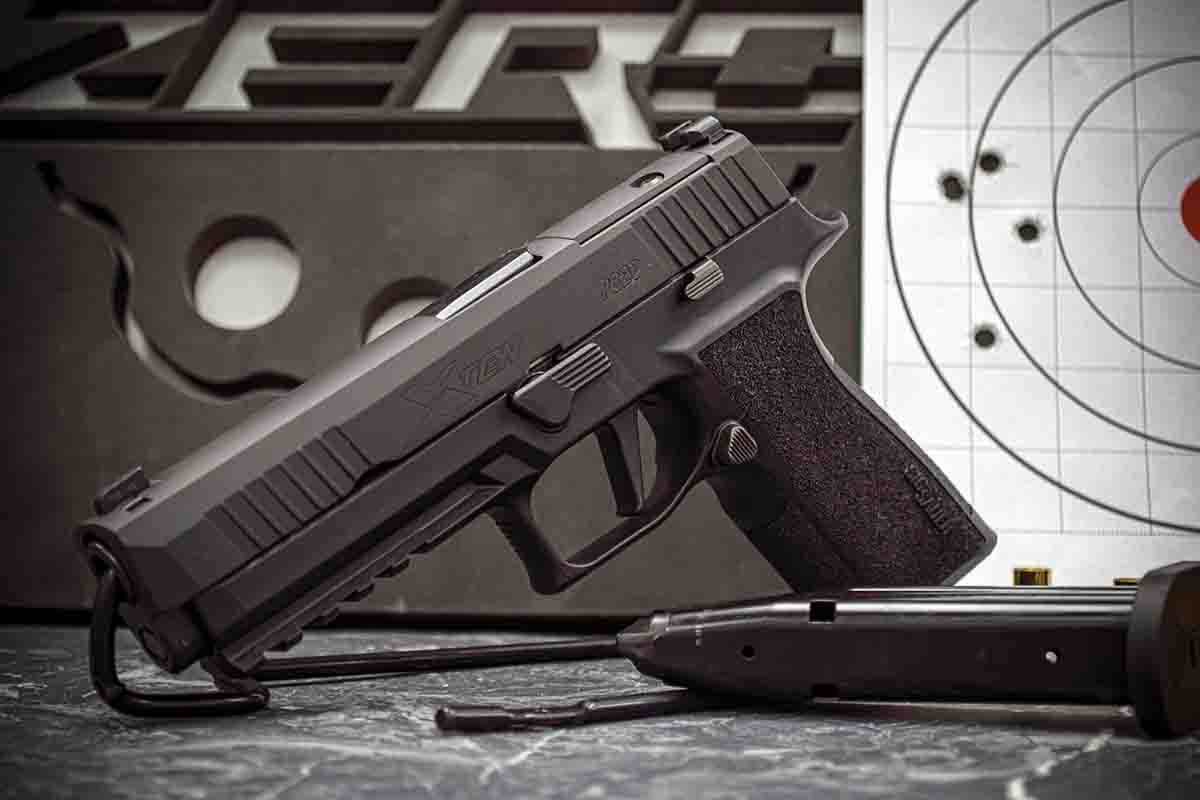
The SIG P320-XTEN does not feel bulky or blocky thanks to the design of the grip frame. The sandpaper-like texture aids in controlling recoil especially if the shooter’s hands are sweaty or wet.
I consulted our LoadData.com website and handloads were developed by carefully selecting appropriate powders that I believed would yield good results. Starline cases were selected for all testing. Previous tests have proven their quality and performance. After much deliberation, a lineup of powders and bullets were on the bench and loading began on an Area 419 ZERO Reloading Press. Redding dies were used to size and expand cases. The case mouths measured .422 inch when expanded. The cases were then primed with Federal 150M primers (It should be noted that magnum primers are not recommended in the 10mm Auto and can increase pressures drastically.) Powder was weighed and dispensed using an RCBS Matchmaster scale that is accurate to .04 of a grain. Using a Redding seating die, bullets were seated to appropriate overall lengths to ensure reliable feeding somewhere between 1.250 to 1.260 inches depending on the bullet. A medium taper crimp was applied in a separate step from bullet seating to ensure proper headspace and to hold the bullet in place during recoil and feeding. This is a critical step when loading 10mm, as a handloader does not want the bullet to set back into the case. This can increase pressures beyond the maximum, especially if near the Sporting Arms and Ammunition Manufacturer’s Institute maximum established pressure of 37,500 psi.
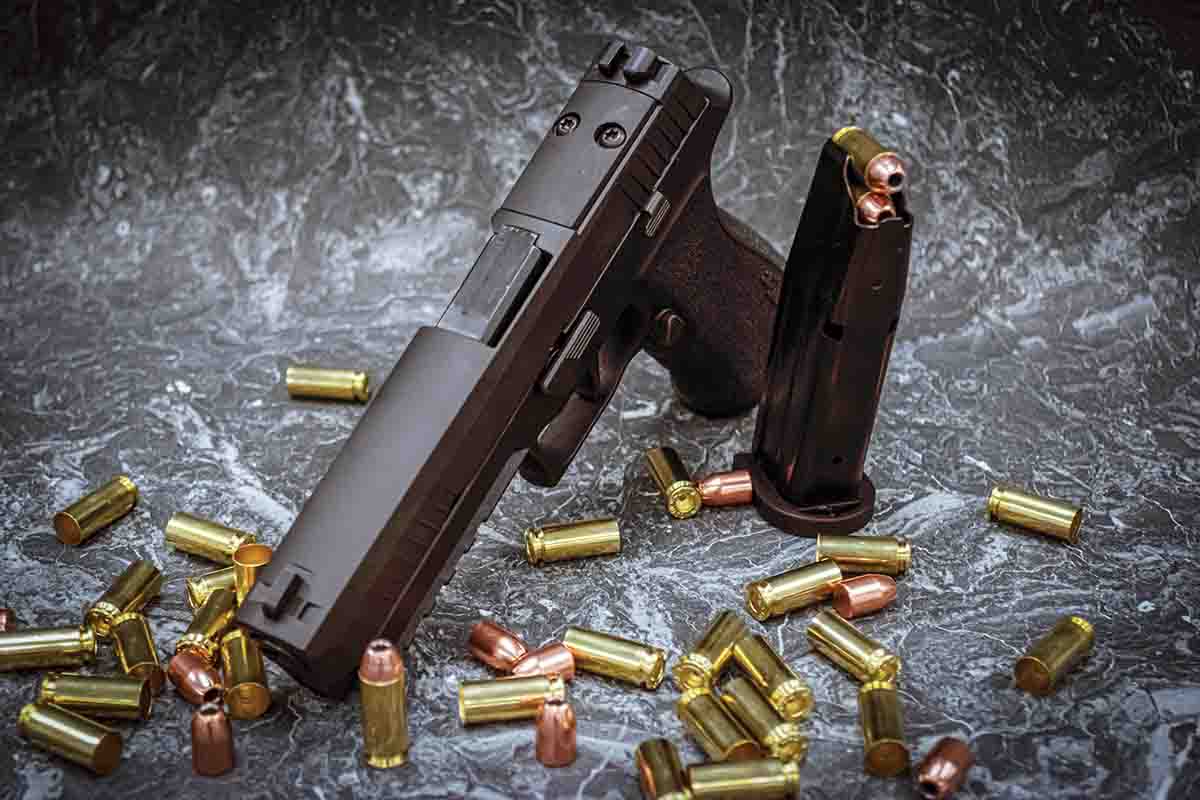
The slide is cut from the factory for mounting optics such as the Trijicon RMR or the SIG Romeo2 or any optic that shares that footprint.
All load development was conducted using a Ransom International Master Series Rest. I have found that this is a good test of the gun’s mechanical accuracy and a quick and easy way to work up excellent loads in addition to saving time. The overall accuracy of the firearm was excellent as reflected in the accompanying table. When it was all said and done, the overall group size did not exceed 4 inches across all the various loads tested. See the accompanying table for more details on the variety of loads tested. While testing the gun, initially it failed to eject a couple of cases. Both failures were within the first two magazines; after that, the gun functioned flawlessly for the rest of the testing. The hypothesis behind this is perhaps the recoil spring or magazine springs needed to be broken-in a little before flawless function was achieved. More than 500 rounds of various handloads and brands of factory ammunition were put through this gun without any further malfunctions.

Accurate No. 9 Powder was able to duplicate the original “hot” factory-loaded 10mm in both accuracy and velocity.
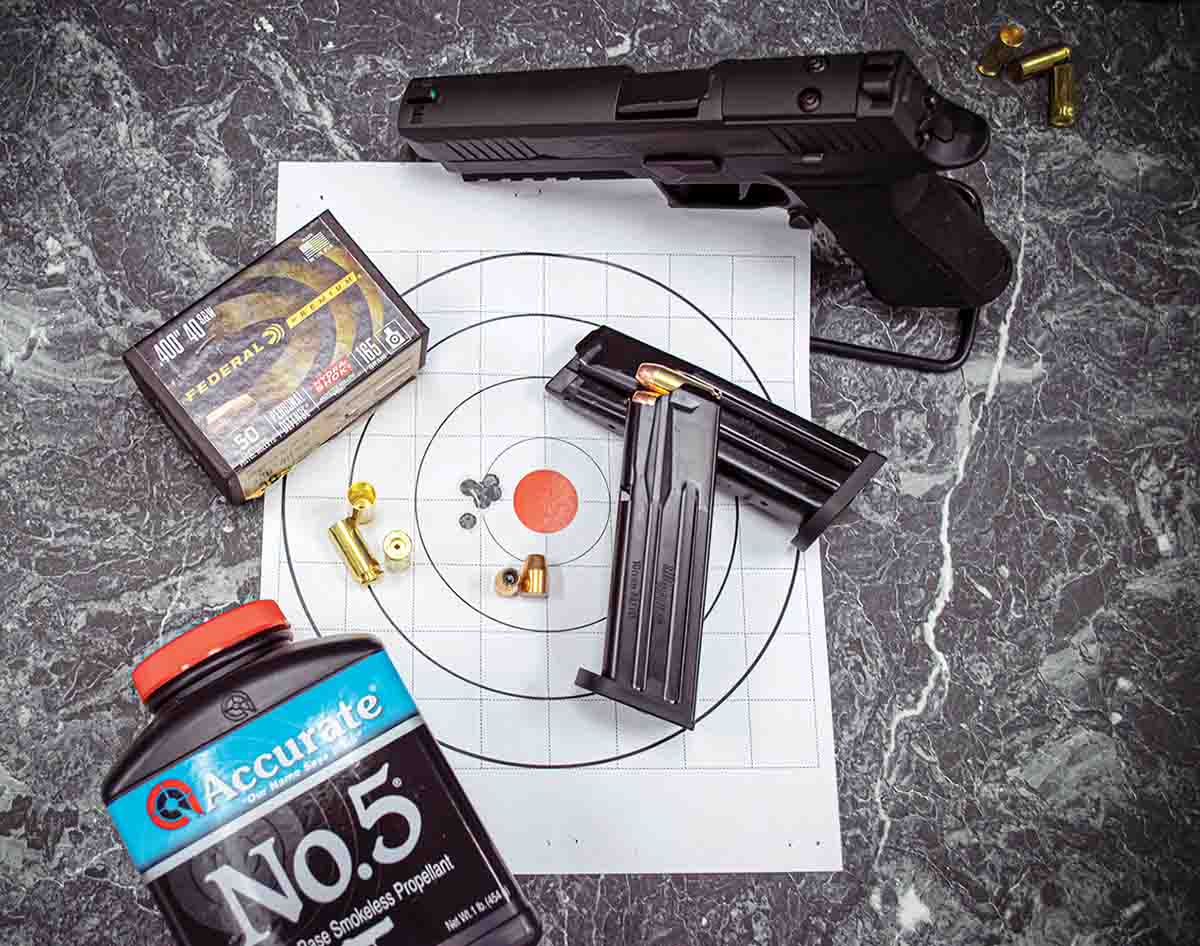
The most accurate load tested was Accurate No. 5 powder and a Federal 165-grain Hydra-Shok bullet. The group measured out to .71 inch.
The fit and finish of the gun is very nice and the texturing is aggressive and certainly helps control the recoil of the firearm. While working from the holster, the finish was found to be durable and more than adequate to protect the firearm under normal use and field conditions. The grip frame is designed from the ground up, with a beveled magazine well, trigger undercut and a higher beavertail. The firearm fits well in my hand and was very comfortable to control despite the increased recoil of the 10mm. One thing I noticed was that with the grip I was initially using, my thumb would depress the slide stop and prevent the slide from locking open after firing the last round. Slightly modifying my grip resolved this issue. The slide is cut for a SIG Romeo 2 or Trijicon RMR red dot optic. It features a 5-inch barrel and has a capacity of 15+1 rounds of 10mm Auto. The weight of the firearm unloaded is 2 pounds, 1 ounce; the overall balance of the gun feels good and the weight certainly helps soak up some of the recoil generated by the cartridge. The trigger feels smooth and crisp with perhaps a hint of grit after the 500-round mark. It broke at 4 pounds, 5 ounces on an average of five pulls on a Wheeler Engineering trigger pull gauge. The reset is nice, short and positive, which aids in rapid follow-up shots.
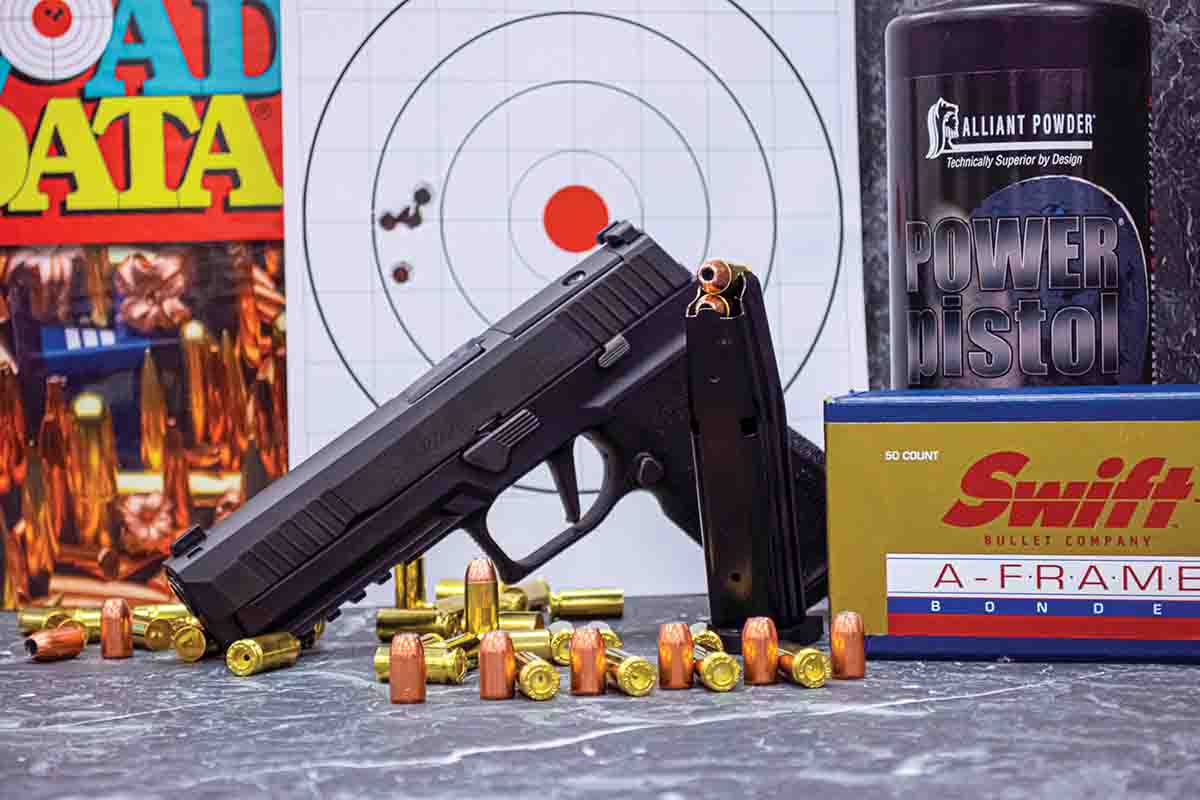
A favorite bullet is the Swift A-Frame Auto, available in 180- and 200-grain weights. It offers deep penetration and reliable expansion.
The 10mm Auto seems to be making a comeback, with many manufacturers offering firearms chambered in the cartridge. A contributing factor to that is that many hunters consider it an alternative carry option to a revolver. It is hard to argue with 15 rounds of 10mm in a magazine compared to six or so .357 Magnum rounds in a revolver. The extra capacity available in the new model handguns certainly helps keep the 10mm relevant. This topic of increased magazine capacity is widely talked about among firearm enthusiasts. When factoring in the added velocity and energy downrange, it made for a very effective cartridge that should not be overlooked by those who are looking for a very versatile handgun. The only gripe I could think of was the lack of a manual safety, which I am sure will be addressed at some point with other models. Some may prefer a manual safety, especially for field carry and use. However, with a good holster that offers good retention, this should be of little concern and mostly boils down to personal preference. In closing, the handgun performed well and perhaps most notable is the consistency of group sizes from load-to-load and the minimum point of impact shift across all the loads tested. For readers who would like more information on the handgun or the loads tested, visit
Handloader TV.
 ad (2-2021).jpg)






 ad (2-2021).jpg)
.jpg)


